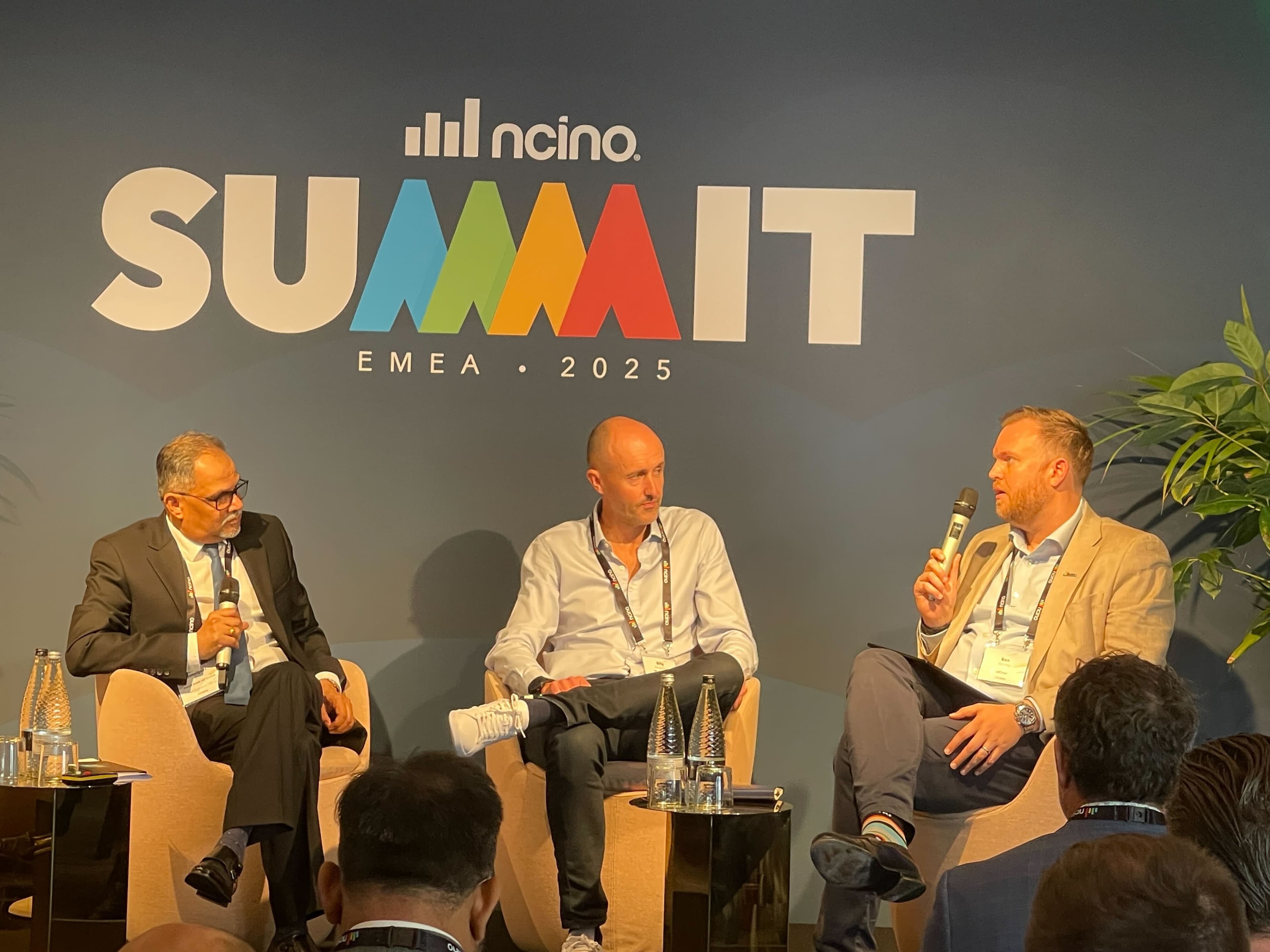EMEA Summit 2025: AI Moves from Hype to Reality

Topics
Region
London, October 2025 — The conversation has fundamentally shifted. When leaders from Santander, UniCredit, MUFG, NatWest, DNB and 58 other financial institutions across 15 countries gathered at this year's nCino EMEA Summit in London, they weren't asking "what if" anymore. They were demanding proven strategies, real-world results and actionable implementation roadmaps. The era of speculation is over. The era of execution has begun.
The Winners Are Being Decided Now
nCino CEO Sean Desmond and General Manager EMEA Joaquin de Valenzuela opened the summit with a stark prediction: "In the next few years, there will be a few big winners in financial services—and then everyone else."
The distinction between these groups won't come from simply adding AI features. It will come from partnerships with firms that possess deep banking domain expertise and can embed AI into proven operational models. "This is about trust, domain expertise and execution at scale," Desmond emphasized. At nCino, we're building the integrated platform and industry knowledge that financial institutions need to emerge as those winners.
The Consolidation Reality No One Can Ignore
The morning sessions confronted attendees with data that painted an uncompromising picture. Europe has lost 20% of its banks since 2019, with dozens more mergers already announced for 2025. The US banking landscape has contracted by nearly half over two decades. This isn't cyclical volatility—it's fundamental restructuring driven by systemic forces that show no signs of slowing.
At the heart of this consolidation crisis lies a "complexity nightmare": fragmented technology estates and legacy data architecture that drive operational costs through the ceiling while making real-time decision making nearly impossible. Banks are paying a premium for infrastructure that actively prevents them from competing. The question facing every institution isn't whether consolidation will continue, but whether they'll be among the survivors.

Check out the recap video to see the Summit in action.
Putting Humans Back in Banking
After establishing the market stakes, Anthony Morris, nCino's Chief Industry Innovation Officer, reframed the central question: "What is AI's fundamental role in our industry over the next five years?" His answer cut through the hype: amplify people, and put humans back in banking.
This vision isn't about replacing relationship managers with chatbots or automating away expertise. It's about delivering measurable results that free banking professionals to do what they do best: build relationships, apply judgment, and create value. The opportunity lies in streamlining operational processes and leveraging data for predictive insights on risk, asset quality, and customer behavior.
Morris outlined three phases institutions must progress through: Explore (deploying human-amplified tools), Evolve (implementing human-augmented operations with agentic workflows) and Embrace (establishing fully autonomous processes with human oversight). But capturing this value demands more than technology adoption. Banks must establish robust governance frameworks, achieve genuine data and operational readiness, consolidate platforms and shift from isolated applications to integrated ecosystems.
Those who navigate this evolution strategically won't just optimize costs; they'll fundamentally transform banking from transactional products into personalized, data-driven experiences that redefine competitive advantage.
From Theory to Execution
The afternoon brought the conversation down from strategic frameworks to operational reality through three customer panels. Leaders grappled with how macro volatility—tariffs, sovereign debt and geopolitical fragmentation—is reshaping credit strategies and risk models. They confronted the hard truths of AI implementation: balancing transformation scale against quick wins, prioritizing data readiness over technology hype and building business cases that earn both C-suite and frontline trust. They also explored the competitive dynamics reshaping lending, from speed versus governance trade-offs to unlocking strategic value from legacy data.
The through-line across all three discussions was unmistakable: incremental thinking won't suffice. Banks must reimagine workflows, governance, and competitive positioning simultaneously or risk irrelevance.
Seeing It in Action
Between sessions, attendees moved beyond discussion to hands-on exploration through interactive demo stations and masterclasses. Solutions spanning the full banking lifecycle—from commercial onboarding to loan origination, mortgage and credit monitoring—demonstrated how integrated platforms deliver value in practice, not just theory. Key partners and sponsors including Salesforce, Accenture, Publicis Sapient, VASS, IBISWorld, DocuSign, Mambu and AutoRABIT showcased the ecosystem enabling this transformation.
The Choice Is Now
The closing keynote brought the day's message into sharp focus: the industry stands at an inflection point, and the gap between institutions moving with speed and those moving with caution is becoming unbridgeable. The truth is that organizational readiness matters as much as technology readiness—the willingness to reimagine roles, redesign workflows and accept that banking's future won't look like its past.
The AI era in banking isn't approaching. It's here. While some institutions are still exploring possibilities, competitors are already building the operational advantages that will define the next decade.
We hope to see you at next year's summit. The question is: will you be leading the change or reacting to it?